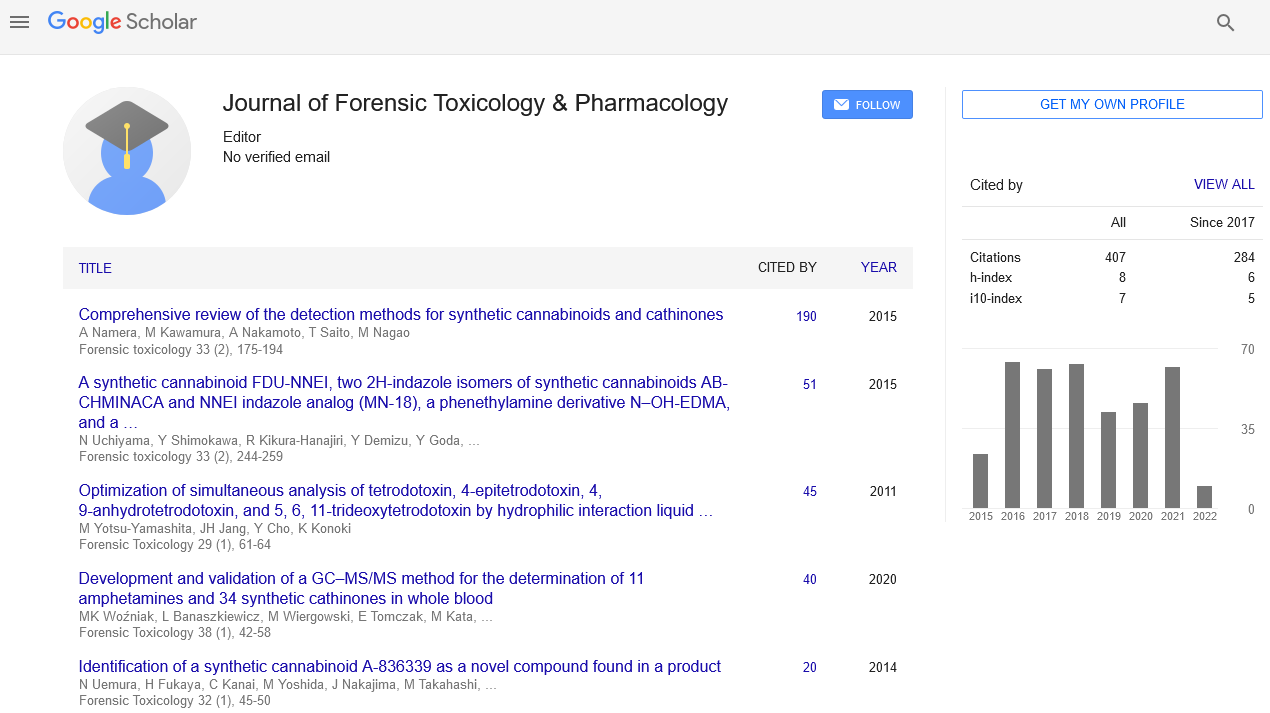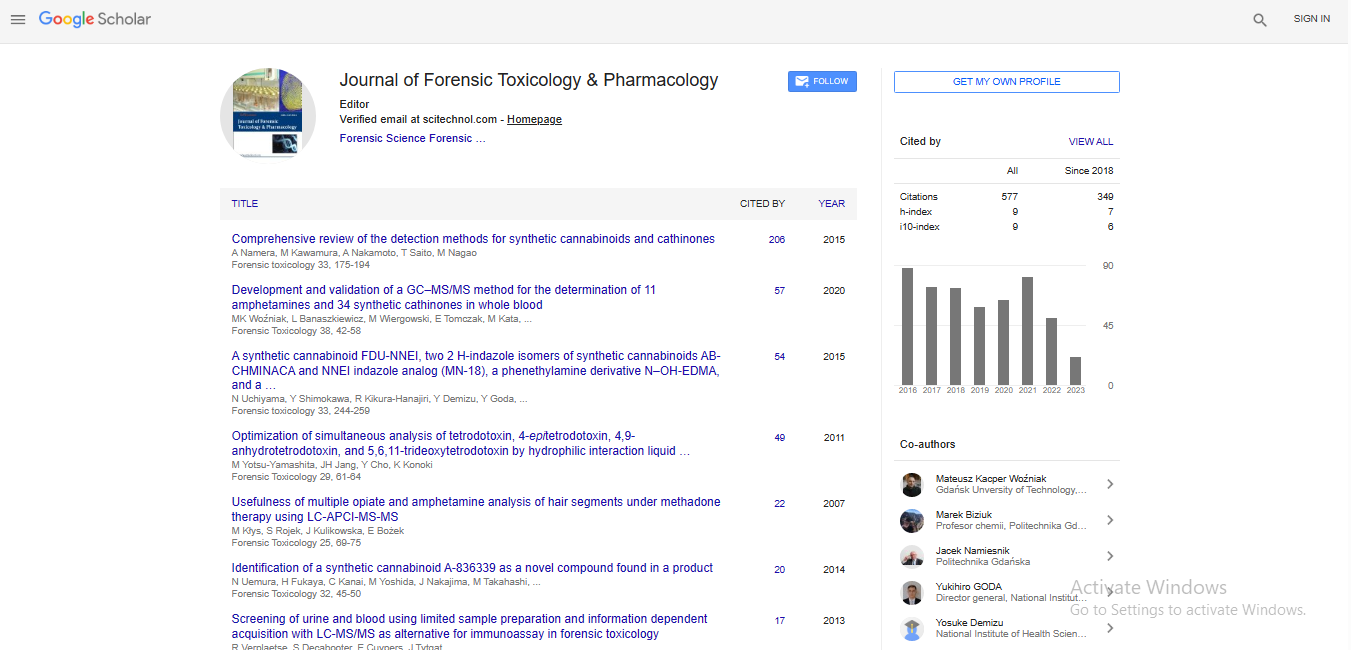Automation of the in vitro micronucleus assay for genetic toxicology testing on the ImageStream imaging flow cytometer
Matthew A Rodrigues
MilliporeSigma, Seattle, USA
: J Forensic Toxicol Pharmacol
Abstract
The in vitro micronucleus (MN) assay is a well-established method for evaluating genotoxicity. MN is formed from whole chromosomes or chromosome fragments that lag behind during the metaphase-anaphase transition and are excluded from the main nuclei following karyokinesis. The presence of MN indicates chromosomal mutations and their quantification is used as an endpoint in genotoxicity testing. Manual microscopy is typically used to perform the MN assay but this is laborious, with low throughput and inter-scorer variability being of particular concern. Automated methods including slide-scanning microscopy and conventional flow cytometry have been developed but these methods suffer from limitations including lack of cytoplasmic visualization (slidescanning microscopy) and the inability to visually confirm the legitimacy of MN (flow cytometry). The ImageStream®X (ISX) imaging flow cytometer possesses the potential to overcome these limitations as it combines the speed and rare event capture capability of conventional flow cytometry with the high-resolution fluorescent imagery obtained by microscopy. A method to perform the in vitro MN assay on the ISX has been developed using well-known aneugens and clastogens. High-resolution imagery of micronucleated binucleated cells can be captured and automatically identified and enumerated software that accompanies the ISX allowing for the evaluation of geno- and cytotoxicity. Details describing the development of the ISX-based in vitro MN assay will be presented. The high throughput nature of the ISX overcomes many of the challenges in slide-based microscopy and conventional flow cytometry techniques. Significantly more cells can be collected and scored compared to microscope-based versions of the assay, improving the statistical robustness of the method. Additionally, all collected imagery can be stored in dose-specific data files. These results represent the first step towards the development of a fully automated approach for performing the in vitro MN assay to assess cytotoxicity and genotoxicity using imaging flow cytometry.
Biography
E-mail: matthew.rodrigues@emdmillipore.com
 Spanish
Spanish  Chinese
Chinese  Russian
Russian  German
German  French
French  Japanese
Japanese  Portuguese
Portuguese  Hindi
Hindi 
